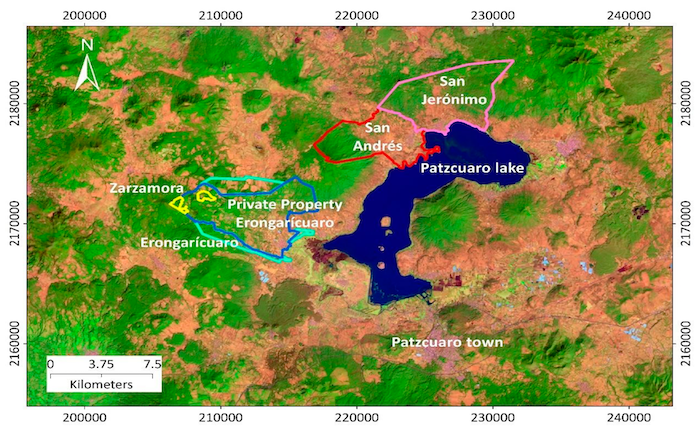
SIMMONS, WALKER – Forest Transition and Fuzzy Environments in Neoliberal Mexico
Cynthia Simmons, Marta Astier, Robert Walker, Jaime Fernando Navia-Antezana, Yan Gao, Yankuic Galván-Miyoshi, Dan Klooster
Article first published online: 6 April 2023
DOI: https://doi.org/10.3390/land12040840
ABSTRACT: Although deforestation remains a continuing threat to both the natural world and its resident human populations, a countervailing land cover dynamic has been observed in many nations. This process of landscape turnaround, the so-called forest transition, holds the potential of regenerating ecosystem services by sparing land from agricultural activities and abandoning it to forest succession. Here, we present a case study of a long-term process of forest transition that is ongoing in the Patzcuaro watershed of the state of Michoacán, Mexico. The research to be discussed comprises a remote sensing analysis designed to (1) capture the land cover impacts of a multidecadal process of trade liberalization (1996–2018); (2) ascertain the role that land tenure plays in land use dynamics affecting forest cover, and (3) resolve forest cover types into native forest, secondary vegetation, and “commodity” covers of fruit trees, in this case, avocado. Mexico presents a useful case for addressing these three design elements. Our analysis, undertaken for both private property and collective modes of resource management in five communities, reveals a forest transition annualized at 20 ha-yr−1, or a gain of eight percent for the period. This translates into a relative rate of forest transition of 0.39%-yr−1 which is three times faster than what is occurring in the temperate biome on a national scale (0.07%-yr−1). Most of the forest transition is occurring on private holdings and stems from field abandonment as farming systems intensify production with avocado plantations and cow–calf operations. As this study demonstrates, forest transitions are not occurring ubiquitously across nations but instead are highly localized occurrences driven by a myriad of distal and proximate factors involving disparate sets of stakeholders. Consequently, policy makers who are keen to expand forest transitions to fulfill their national climate action commitments under the Paris Agreement must first promote research into the complexity of landscapes and drivers of land change at regional and local scales.
Read the full publication in Land.